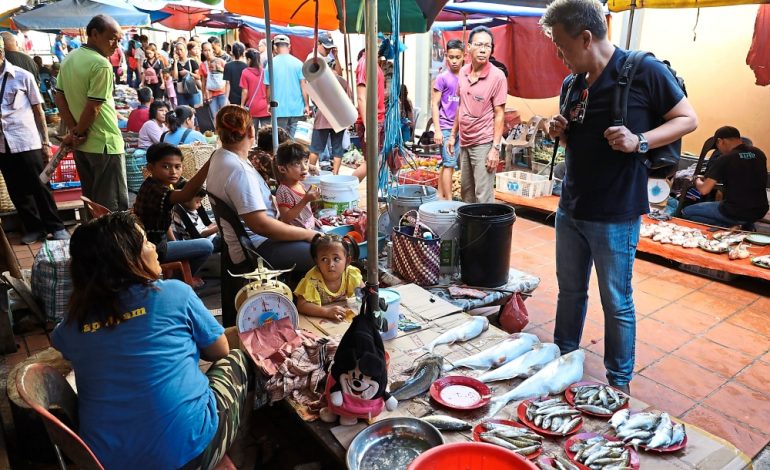
The Teresang Market in Kapit is where one goes to find jungle produce, local vegetables, freshwater fish and freshly-hunted game. — Photos: GLENN GUAN/The Star
There is only one practical way to reach Kapit from Sibu – a three-hour ride on the bullet-shaped express boats that streak across the waterways of the mighty Rajang, the country’s longest river. The other is to hire a light aircraft to get to this truly sleepy town in Sarawak.
No one goes there unless visiting family or conducting simple trading, farming or logging.
Kapit, a district of 15,595sq km in size, is the riverine town synonymous with Iban cultures and traditions, being Sarawak’s largest ethnic group, which makes up more than three-quarters of the state’s population.
My Sibu-based colleague said he has only been there twice, and he didn’t volunteer to accompany me on this trip up the 563km river.
“Have a good trip to Kapit. Call me when you are back in Sibu, boss. By the way, you need to wake up by 4am, as you need to be at the pier by 5.15am,” he reminded me on the eve of the excursion.
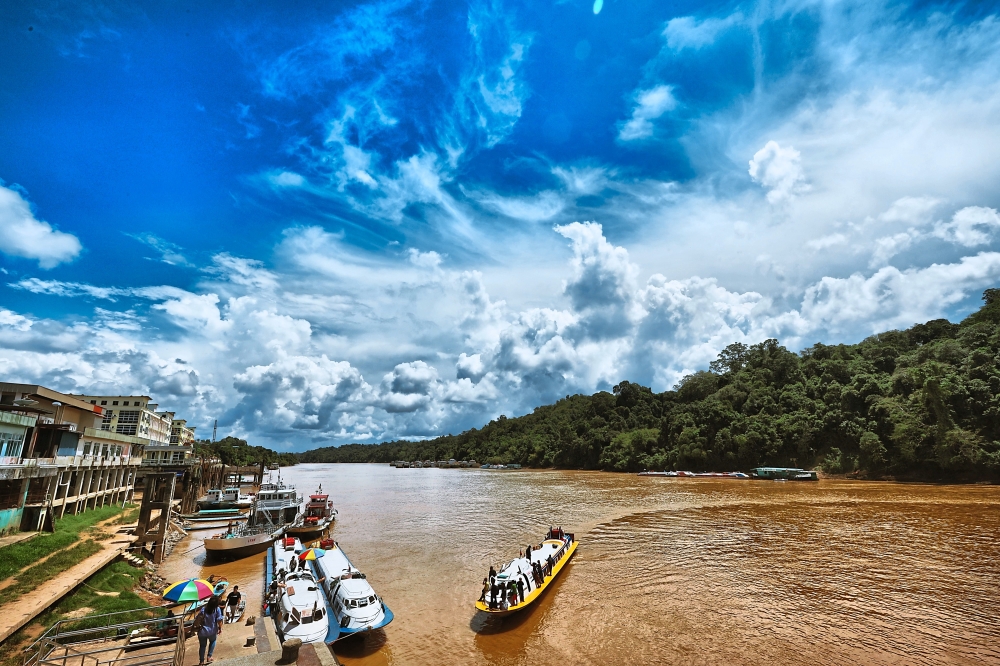
The Rajang River as seen from the Kapit Ferry Terminal.
His facial expression spoke volumes of his unwillingness to join in, and he must have wondered why on Earth would I want to make this journey to this remote place.
I have thought about visiting Teresang Market for almost a year now. I have surfed the Net and watched many videos on the exotic meat sold openly by the native traders.
Most of the footage were posted by western backpackers fascinated by the strange jungle products and animal meat on sale there.
The world-famous travel guide reference, Lonely Planet, put Kapit on the world map and recommended the market as one of the interesting places to visit.
This orang Semenanjung, whose marketing is confined only to the supermarkets in the Klang Valley, was just as intrigued.
The ride up the murky river, passing by longhouses and logging camps, was nothing to write home about. Forget about seeing crocodiles by the edge of the river. As my nephew expected, soon, all of us fell asleep.
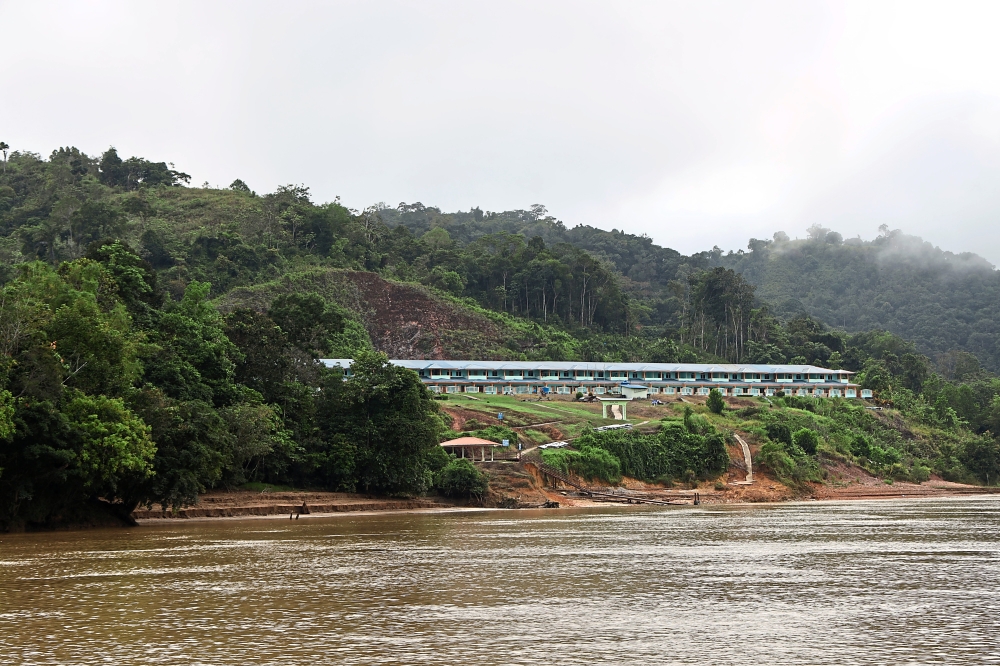
Modern longhouses along the Rajang River.
But the excitement was reignited when other passengers woke us up when we arrived at Kapit and informed us that the famous Teresang Market was just 10 minutes away from the pier. We were advised to buy our return tickets before venturing farther. This was sound advice because if we missed the 2.30pm trip back to Sibu, we’d be staring at the prospect of putting up a night there, which didn’t have me jumping for joy.
Our chaperones probably didn’t expect us to stay for long at the market, knowing we’d complete the walk in an hour at most.
The market, which opens at 4am, sells a variety of daily necessities, but it was the wild meat which caught our attention (and the reason for the trip).
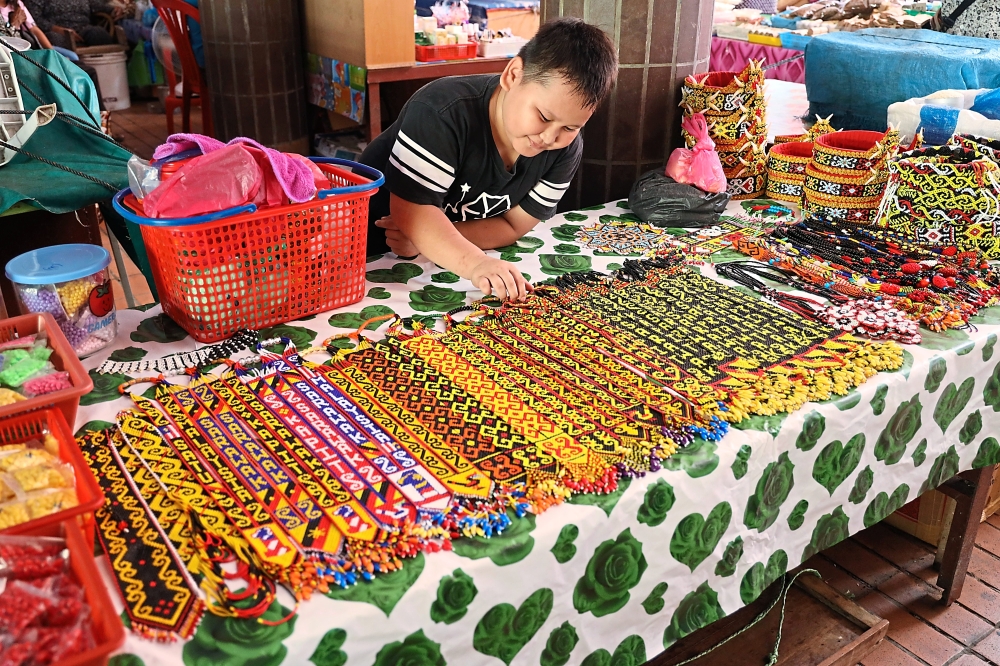
A young trader arranging locally produced beaded necklaces at the Teresang Market.
Wild boar meat sellers openly hawk their fare, although I had read that the Kapit District Council had imposed a ban on them trading within and outside the Teresang Market. But I suspect it was only a loose ban which was barely enforced. There was plenty of fresh wild boar meat on sale, as well as those that appeared to have been smoked.
Wild boar meat is a delicacy for locals, and they are allowed to hunt the animals for their own consumption, though it’s illegal to sell the meat.
Under the Wildlife Protection Ordinance 1998, it’s an offence to sell or buy wildlife or wildlife products hunted anywhere in Sarawak.
The penalty for selling wildlife products or wild meat without a licence is RM5,000, while buying wildlife trophies or wild meat comes with a RM2,000 fine.
But no one raises an eyebrow over the sale of wild boar meat as the species is not in danger of extinction, and so, is openly sold in most parts of Sabah and Sarawak.
Unsurprisingly, the local market crowd didn’t look excited, even with a stall selling two mouse deer (kancil), two swamp otters, a porcupine, and what appeared to be two sun bears.
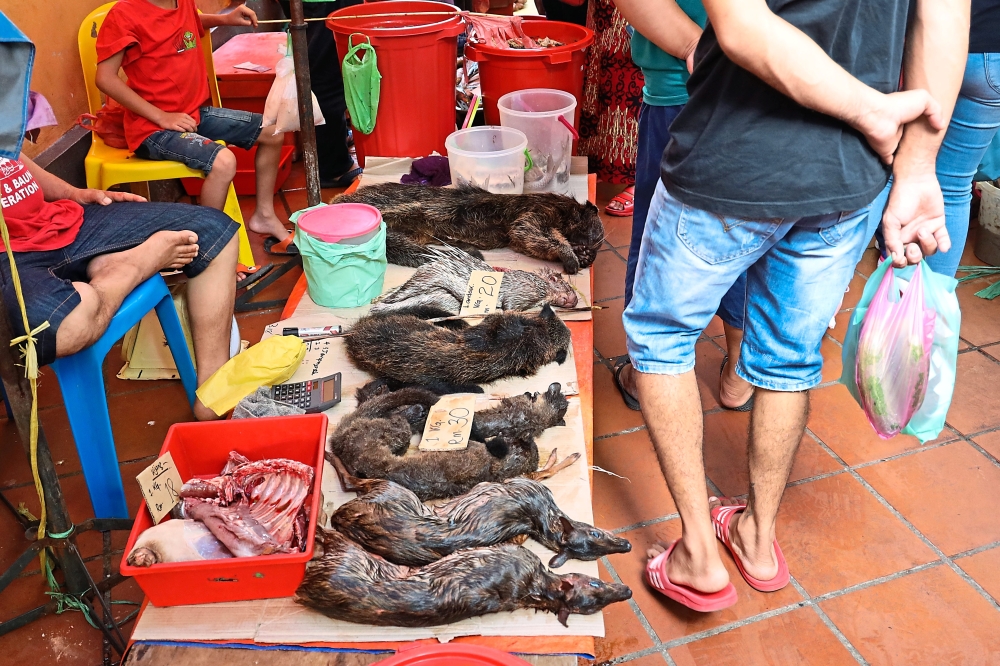
Heartbreaking: Exotic meat – mousedeer, swamp otters, porcupine and something that looks like sun bear – being sold at the market.
I was also told that bats – live and smoked ones – were often sold at the market but I didn’t see any this time.
The animal lovers in us were seeping out of our pores – we were horrified and quite alarmed, but we didn’t want to show it.
Seeing the remnants of a wild boar is one thing, but the availability of sun bear meat (or what looked like it) is surely crossing the line.
The seller could tell from our conversations and dressing that we were from out of town. He appeared friendly and tried to explain to me what these animals were, but I barely understood him.
It didn’t help that my photographer began snapping away, unsettling the seller to the point he demanded for him to stop.
Close by was another trader selling chopped up pieces of the Borneo short-tailed python, which the Iban call ular ripong. It’s known as python breitensteini or blood python, a sub-species of the python.
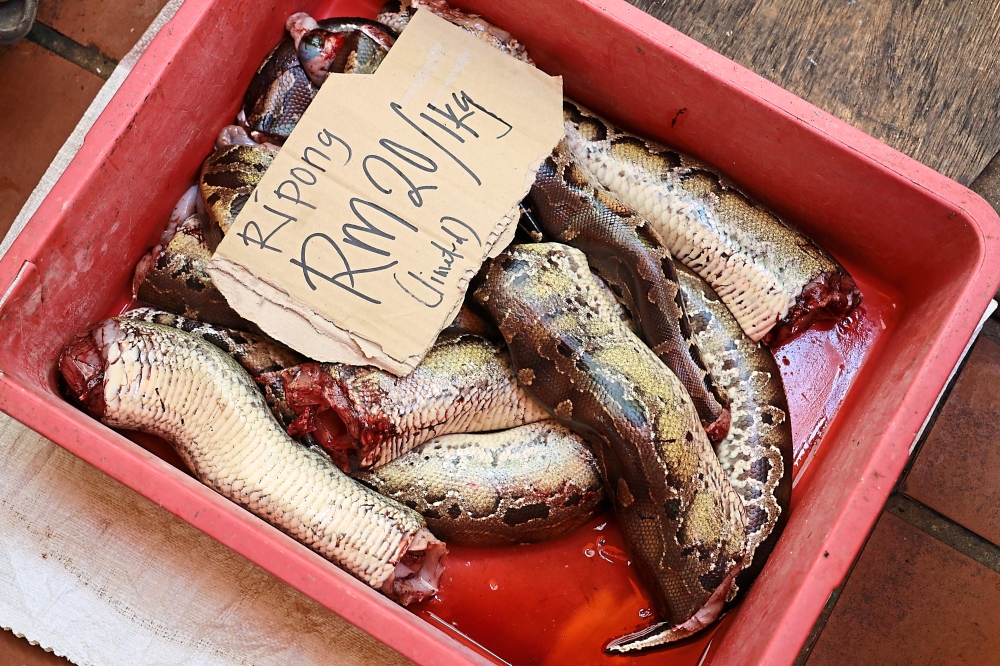
A trader was selling ripong snake meat at the market that day. According to the natives, it tastes like chicken.
I have never eaten any exotic meat, and neither do I intend to, but I have also learnt not to be judgmental of natives who venture deep into the jungles to hunt for such animals for their own consumption.
And certainly, engaging in anthropological and sociological discourse is beyond me, but the sale of such meat is common in the native market.
In fact, a friend told me that I need not travel all the way to Kapit for a wild experience – I would just need to drive for 40 minutes from Kuching to the Serian market, where I’d be able to see live pythons for sale!
I saw plenty of river fishes, including the semah, lanjong and patin, but not the pricey empurau. I honestly thought I saw the biggest catfish there.
There were also stalls which sold the soft-shelled turtle or labi labi, and frogs caught in the jungles.
The Teresang visit was an eye-opener, since I also tasted some jungle fruits I had only seen for the first time.
The dabai is considered the black olive of Sarawak, but they seemed tasteless to me, although others said they taste like avocado.
Its scientific name is Canarium Odontophyllum and they grow abundantly along riverbanks in Sibu, Kapit and the Sarikei divisions of Sarawak. It’s a seasonal and highly perishable fruit with a shelf life of two to three days.
I also found plenty of mata kucing – the local variety of longan – which tasted better than the ones I plucked from the trees in Belaga, Sarawak.
Another fruit which caught my attention was the belimbing merah, the Baccaurea Angulata.
“Belimbing Merah derived its name from the colour and shape of the fruit. This red starfruit is also called ‘red raspberry’. The whitish content of the fruit is the same colour and taste as the rambai fruit,” writer Lindsay Gasik has aptly described.
Like her, I was also searching for the wild durians, durio dulcis, or the red durian, but it was not yet in season.
While I didn’t get to see and try all the jungle produce, this was certainly an amazing journey for me.
It was my first boat trip along the Rajang River, which I had only read about in my Geography textbooks in school. So, to experience the sights and smells of this unique market was almost surreal. It was also my first trip to Sibu, the famous and predominantly Fuzhou town, which has produced so many rich men in Malaysia.
My greatest takeaway is witnessing how other Malaysians live, especially those off the beaten path, ultimately providing me an enriching experience like never before.





